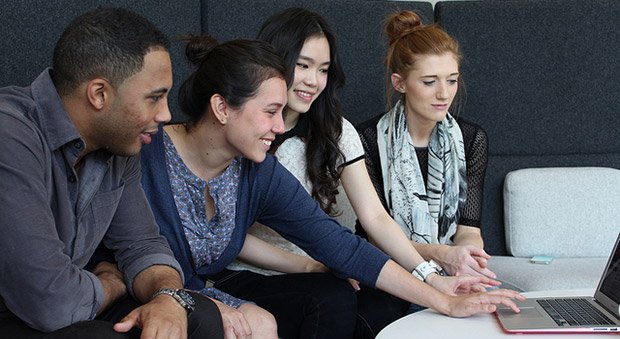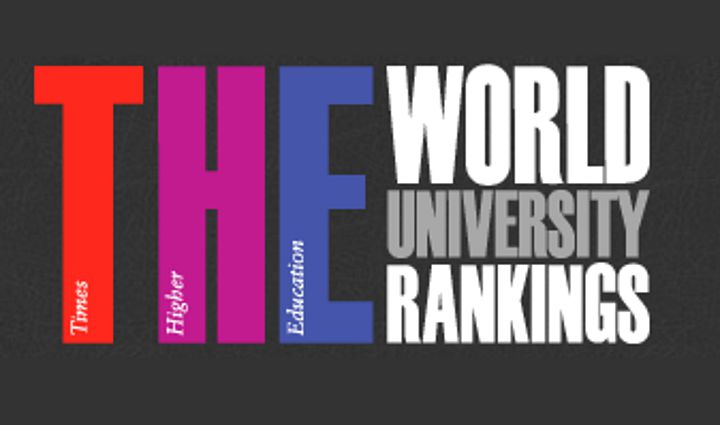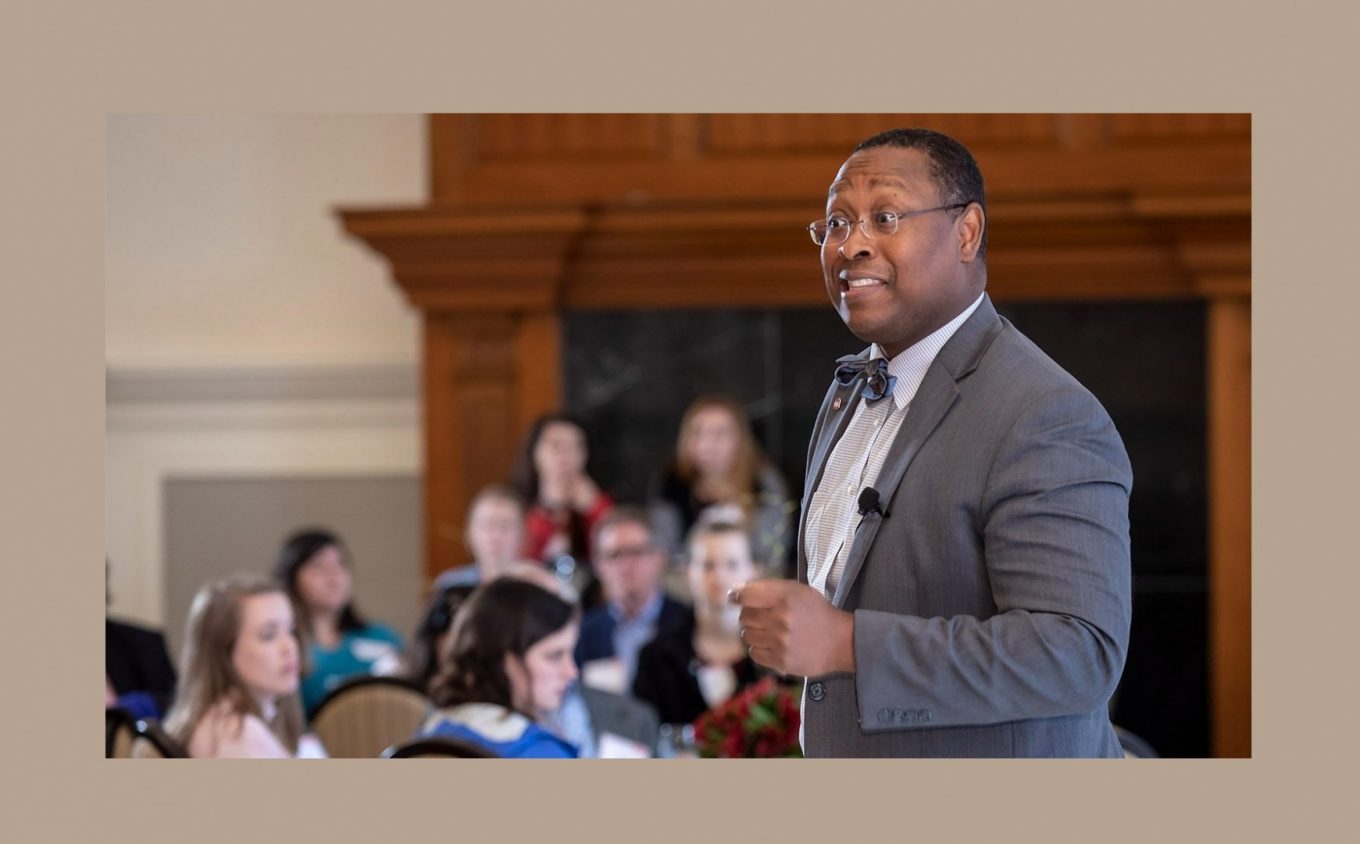
Dr. James L. Moore III, Vice Provost for Diversity and Inclusion and Chief Diversity Officer at Ohio State University is the new guest in this Higher ED Thought Leadership Series. Hosted by Dr. Emad Rahim.
Dr. James L. Moore III is the vice provost for Diversity and Inclusion and chief diversity officer at The Ohio State University, while serving as the first executive director of the Todd Anthony Bell National Resource Center on the African American Male. He is also the inaugural EHE Distinguished Professor of Urban Education in the College of Education and Human Ecology.
From 2015 to 2017, Dr. Moore served as a program director for Broadening Participation in Engineering in the Engineering Directorate at the National Science Foundation in Arlington, Virginia, and, from 2011 to 2015, he was an associate provost for Diversity and Inclusion at The Ohio State University, where he managed numerous programs and units.
Dr. Moore is internationally-recognized for his work on African American males. His research agenda focuses on school counseling, gifted education, urban education, higher education, multicultural education/counseling, and STEM education, and he is often quoted, featured, and mentioned in popular publications, such as the New York Times, Columbus Dispatch, Spartanburg Herald, Cincinnati Enquirer, Journal of Blacks in Higher Education, Chronicle of Higher Education, and Diverse: Issues in Higher Education. In both 2018 and 2019, he was cited by Education Week as one of the 200 most influential scholars and researchers in the United States, who inform educational policy, practice, and reform.
Dr. Moore received his B.A. in English Education from Delaware State University and both his M.A.Ed. and Ph.D. in Counselor Education from Virginia Polytechnic Institute and State University.
Dr. Emad Rahim: Please tell us how you got started in your career as Vice Provost for Diversity and Inclusion and Chief Diversity Officer.
Dr. James L. Moore III: Like many young people across the United States, my path to higher education began through an athletic scholarship, as a football player at Delaware State University (DSU). I had a knee injury that cut short my opportunities to play professional football but also served as a wake-up call.
I was intrigued with learning and recognized the transformative power of education. I knew that inspiring young people to reach for their dreams was important. At DSU, I completed my bachelor’s degree in English Education and later pursued a master’s and doctoral degree at Virginia Tech in counselor education, with an emphasis in school counseling. In graduate school, my eyes began to be opened to the life of the mind in academia. I had some fabulous mentors at both DSU and Virginia Tech, such as Dr. James Scott King, Dr. Tom Hohenshil, Dr. Jimmy Fortune, Dr. Bevlee A. Watford, Dr. Clifton Bryant, and Dr. Octavia Madison-Colmore, who consistently and positively reinforced my intellectual ability more boundlessly than I had ever imagined.
At The Ohio State University, I accelerated through the academic faculty ranks (e.g., assistant professor, associate professor, full professor, and distinguished professor), and during this progression, I became the inaugural director and later the first executive director of the Todd Anthony Bell National Resource Center on the African American Male. I then moved up the administrative ranks to become Associate Provost for Diversity and Inclusion. I worked for thoughtful administrative leaders like Drs. Mac Stewart and Valerie Lee, but I was always thinking about my own vision for the Office of Diversity and Inclusion (ODI) and how I might build on their administrative successes at The Ohio State University as vice provost for diversity and inclusion and chief diversity officer.
After Dr. Lee’s retirement, I left my associate provost post and headed to the National Science Foundation for nearly 2.5 years and remotely continued my research and programmatic activities, with periodic visits to Columbus, at the Todd Anthony Bell National Resource Center on the African American. Eventually, I was invited by Provost Bruce McPheron to lead the Office of Diversity and Inclusion where I had worked for so long. Although initially reluctant to take on the role, I took on the challenge on an interim basis, and within months in the role, Provost McPheron asked me to consider taking on the role full-time. We have achieved a lot in a short period of time but still have a lot to accomplish.
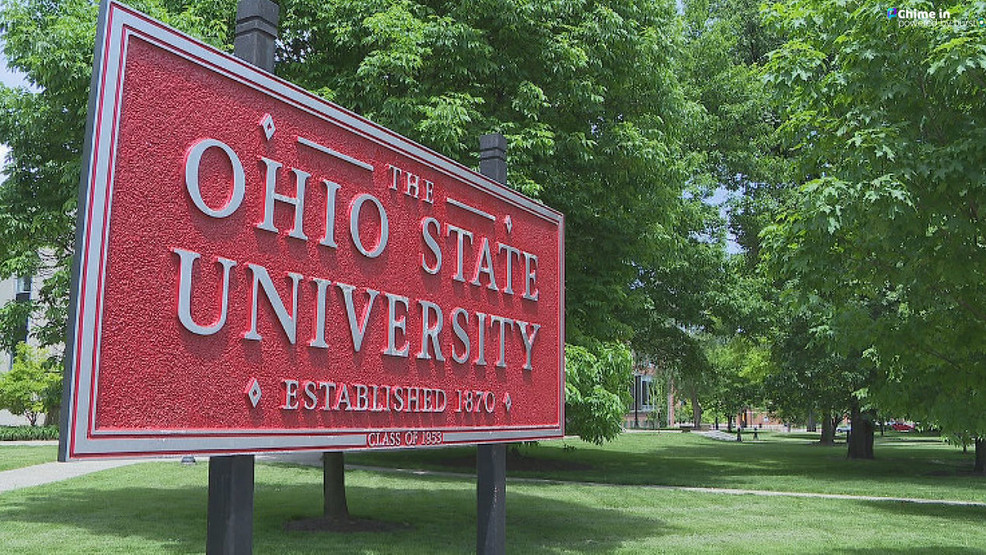
E.R: How would you describe your leadership style and management principles for success?
J.L.M: It starts with the old-fashioned country values that my parents instilled in me: treat everyone with dignity and respect, always put more on the table than you take, and follow the Golden Rule of treating others the way that you would want to be treated. I try to get to know the career dreams of Office of Diversity and Inclusion staff, and then I try to coach and/or assist them in reaching those specified professional aspirations and dreams. I see my job as connecting aspirations with opportunities, whether we are referencing students or staff who work in the Office of Diversity and Inclusion.
To me, the greatest asset we have in the world is human capital. I aspire to be a truly collaborative leader who stimulates the remarkable human talent in our office so we can move forward together. Perhaps it is the old counselor in me, but I am genuinely interested in people and what makes them tick and how they see and prepare for the world. Further, I embrace and value continuous improvement. Because of this perspective, I have tried to create, through our new ODI Strategic Road Map, an apparatus for continuous improvement and immense outcomes for staff, as well as the organization.
E.R: Please tell us a little about your work on campus and the impact that diversity and inclusion have on student experience and services.
J.L.M: The reality is that college can be an isolating and daunting experience for everyone, particularly when you first arrive. You feel like you can achieve and be productive as in the past, but, like all new experiences, you feel like you must re-establish yourself to make your mark. Now, add to the mix that you are one of the few, if not the only, Black student in your calculus class or the only Latinx student in the residence hall.
In the Office of Diversity and Inclusion, we try to provide a sense of community for our students. We offer them a support system and services they can continuously access. We have an embedded mental health counselor, and we offer tutoring and supplemental instructional services, early arrival programs, special speakers, and enrichment workshops, all aimed at helping our students not only succeed in the classroom but in life in general. We service both undergraduate and graduate/professional students; our Office of Diversity and Inclusion is one of the oldest, largest, and most comprehensive office of its kind in the United States. Based on the number of students that we serve, we are larger than some historically Black colleges and universities (HBCUs) and minority serving institutions (MSIs). Our goal is to remove barriers to success for our undergraduate and graduate/professional student scholars, using evidence-based practices to do so.
E.R: During your time at Ohio State University, what institutional initiatives are you most proud of and why?
J.L.M: Thus far, I been extremely proud of what The Ohio State University has done around the issue of affordability by increasing financial aid and freezing tuition. The reality is that far too many of our students from every background are struggling to pay for college without undertaking a mountain of debt.
In the Office of Diversity and Inclusion, of course, we are extremely proud of our flagship programs like the Morrill Scholarship Program and Young Scholars Program. We’ve had two Morrill Scholars who have become Rhodes Scholars in recent years. The Minnesota Teacher of the Year in 2020 was a Morrill Scholar graduate, the first Somali-American educator to ever win the award. Our Young Scholars Program has brought the dream of an Ohio State education within reach for thousands of first-generation, low-income students. We have watched over 1,000 students receive a college education through our Young Scholars Program, which reaches low-income, urban students in public school districts in Ohio such as Akron, Canton, Cincinnati, Cleveland, Columbus, Dayton, Lorain, Toledo, and Youngstown.
Many other units within the Office of Diversity and Inclusion have received national acclaim and recognition for their efforts, such as the Todd Anthony Bell National Resource Center on the African American Male, the ACCESS Collaborative Program, LASER (Latinx Space for Enrichment and Research), and The Women’s Place.
An internal initiative that I am proud of is our ODI Strategic Road Map that we launched this year, which will help us to improve our core operations in the Office of Diversity and Inclusion and to ascend to the next level of impact and influence.
More Higher Ed thought leadership Series Interviews
Emad Rahim Interviews Dr. Mary Hawkins, President of Bellevue University
Emad Rahim Interviews Merodie A. Hancock, PhD President, Thomas Edison State University
E.R: How is the University addressing campus safety and academic accessibility during the global pandemic, especially for minority students that are most affected -based on statistics?
J.L.M: This is an extremely tough issue for everyone in higher education right now. The reality is that part of what makes the college experience so fruitful are the interactions that students have with each other and with their instructors in the classroom and beyond. Suddenly, those are tinged with anxiety.
We are listening to the public health experts and doctors from our world-class Wexner Medical Center and have adopted the best practices they have suggested to keep our campus safe. We really have retooled our programs and initiatives so that they can now be done remotely or in a hybrid format. Students who have people in their families with underlying conditions can continue their education off-site. Advancements in technology have allowed institutions of higher learning like The Ohio State University to pivot and adapt to meet many of our students’ educational and personal needs.
E.R: With more universities going online or offering hybrid options, how is your university addressing the needs of underrepresented student populations that may not have access to wireless or computers?
J.L.M: This global pandemic has really stripped away all our façades of equality and brought home the painful divides in this country, including our great digital divide. It is imperative that everyone in our society has access to wireless and high-speed Internet for educational and economic reasons.
At The Ohio State University, when this pandemic hit us in March, we did an immediate assessment of what our students’ needs were in terms of ensuring they had connected devices and other pertinent educational and personal essentials. The university has a partnership that began several years ago with Apple that provides incoming first-year students with laptops, so we were in pretty good shape. Our biggest challenge has been ensuring that high school students who are part of our Young Scholars Program have devices and connectivity. We have leaned on our network of supporters and alumni to fundraise around this issue, but it is still an ongoing challenge that I am confident we can tackle.
E.R: With COVID-19 affecting how every campus is operating around the world, what should the academy be most concerned about when it comes to topics like inequality, diversity, and inclusion?
J.L.M: There are a variety of approaches and strategies being implemented. Because of Black student, staff, and faculty led protests, the Office of Diversity and Inclusion was founded in 1970. Although The Ohio State University has a rich and storied history of promoting diversity, equity, and inclusion, university leadership still realizes that we have more to achieve and must work toward doing so.
As an institution, The Ohio State University is taking bold steps to evaluate all aspects of the university to become more inclusive and ideal for all students, staff, faculty, administrators, and postdocs. We want to make sure that our policies, practices, programs, processes, and positions do not advantage some and disadvantage others. In addition to the many roles I hold at the institution, I am currently serving as the co-chair of the Task Force on Racism and Racial Inequality. The task force members, the other co-chair, and I are charged to present a set of recommendations to our current president, Dr. Kristina Johnson, which she can act on to make the university even more inclusion. To learn more about the task force, I encourage our readers to check out the following website: https://odi.osu.edu/task-force-racism-and-racial-inequities.
In closing, I believe that institutions of higher learning are a public good and that they provide immense benefits to society. Today, like other times in history, they are called to provide bold and courageous leadership to the nation in ensuring that higher education is accessible and attainable to educationally and economically vulnerable communities in our society. In this vein, we need to make sure that our institutions partner with public and private sectors to ensure that opportunities are made available to these communities, as well as to create support mechanisms for them. In the Office of Diversity and Inclusion, I am very proud of our recent partnership with JPMorgan Chase & Co., which led to our largest corporate gift ($2.5 million over five years). For more information, see https://odi.osu.edu/jpmorgan-chase-co.
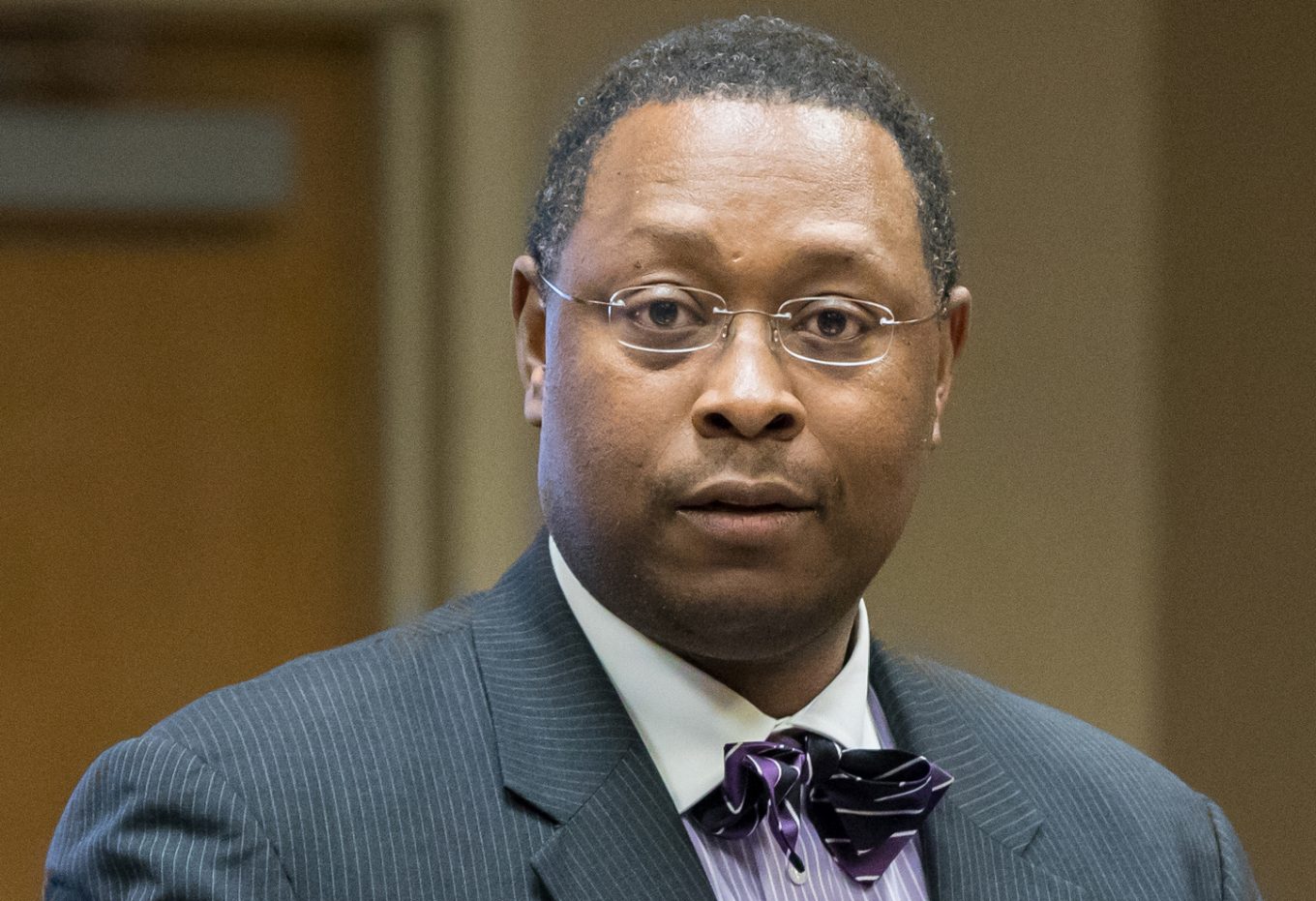
E.R: In your opinion, what role does higher education play in responding to a global pandemic like COVID-19 and support social justice causes like Black Lives Matter?
J.L.M: From my perspective, COVID-19 shows us how more than ever we need the sharpened minds and specialized skill sets that are the product of a first-rate college education. The challenges of this century—viral pandemics, turning toward renewable energy, feeding an increasingly crowded planet—are only going to be solved by the brightest minds. We need the human capital found in every zip code to be part of the solution.
In terms of the call for a more just and equal society coming from the Black Lives Matter movement, I think we need to continue to challenge our students to seek change in the world. We ask our Office of Diversity and Inclusion scholars all the time: “How do you want to make the world a better place?” We need to encourage the call to action we are seeing in our streets. This is a time to stand up and be counted alongside this new generation.
E.R: What is your advice to academic leaders that are responding to all these growing crises on their campuses for the first time?
J.L.M: I do not know that I have any great advice right now. There is no silver bullet that we can use to solve these problems. I think the best way to communicate with people in a crisis is to level with them. Tell them what you know, and tell them what you do not know, listen to the experts, and to what your students are saying. There is no shame in not having all the answers right now. We are all finding our way forward in the dark, looking for the light switch. Honesty, empathy, integrity, and pragmatism should be your guide.
E.R: Many of our subscribers are new leaders in higher education or aspiring to become a university administrator, what recommendations or advice would you give them as they move forward in their careers?
J.L.M: I would tell someone who wants to be a leader in higher education to stay in the preparation and continuously improvement mode, work hard, and be productive in whatever role they tackle. Do your job well and do not get caught up in watercooler politics. Seek out mentors and those who have accomplished what you seek to do.
Be ready for the next challenge and have a plan to get where you want to be. You do not climb a mountain by heading straight up to the top. You look at the terrain in front of you and plot a course and make your way to the summit strategically.
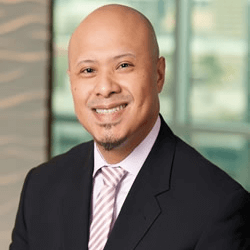
Dr. Emad Rahim is an award-winning entrepreneur, educator, author, community leader and TEDx Speaker. He currently serve as the Endowed Entrepreneur-in-Residence at Oklahoma State University and teaches at the Jack Welch Management Institute in the Executive MBA program. He was recognized by the United Nations Foundation as a 2013 Empact100 Honoree for his social entrepreneurship work, received a Congressional Award for his community service and was the recipient of the Forty Under 40 Business Leadership Award sponsored by Syracuse University. His personal story was turned into a short documentary, “Against the Odds,” and featured in the Huffington Post and Forbes. He co-authored “Leading Through Diversity: Transforming Managers Into Effective Leaders” and “The 4-Tions: Your Guide to Developing Successful Job Search Strategies” and is a frequent contributor to the Refractive Thinker book series, CEO Magazine, TweakYourBiz and YFS Entrepreneurship Magazine. Fellow him on Twitter @DrEmadRahim
























